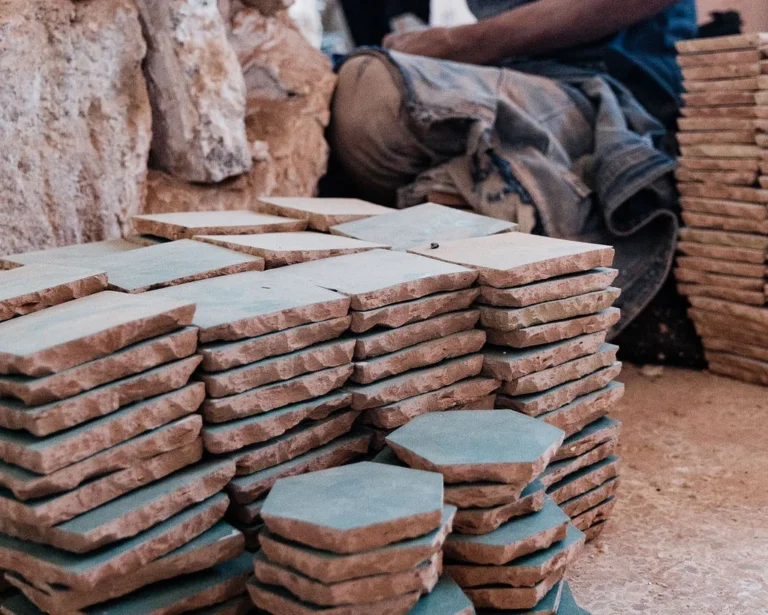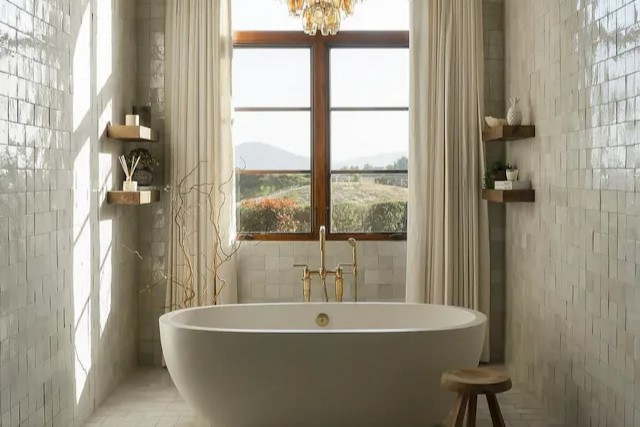Our Location
fes, morocco
Sidi Harazem 30070


The Art of Moroccan Zellige Tiles
Zellige tiles are among Morocco’s most iconic architectural treasures. Each piece is handmade using traditional methods passed down through generations. As a result, these tiles beautifully combine cultural heritage with masterful craftsmanship.
What Are Zellige Tiles?
Zellige is an ancient mosaic art made from hand-cut geometric pieces. Artisans carefully assemble these pieces into stunning plaster panels. This traditional Islamic art began in Andalusia and the Maghreb. Today, it remains a signature feature of Moroccan architecture.
Versatile and Beautiful Applications
You can use Zellige tiles in many creative ways. For example, they adorn walls, floors, pools, tabletops, and more. Each tile is shaped and placed by hand to form intricate patterns. Because of this, every installation is completely unique.
A Rich History Since the 11th Century
Zellige art began in the city of Fez and spread across the region during the Middle Ages. It flourished under the Nasrid and Marinid dynasties. Initially, artisans used blue, green, and yellow colors. Later, they introduced red in the 17th century. While Fez remains the heart of Zellige production, the craft also spread to cities like Meknes and Tlemcen.
The Timeless Craft of Zellige Tiles
Zellige tiles enjoy widespread appeal across many cultures. This is because artisans skillfully adapt this ancient craft to modern times. At the same time, they carefully preserve its authentic techniques and designs.
Thanks to its unique character, Zellige continues to captivate artists, architects, and heritage lovers worldwide. Although production costs are high, this traditional craft has experienced a strong revival in the 21st century.
From Fez Clay to Handcrafted Masterpieces
The Zellige process begins with the natural clay of Fez, known for its fine quality. First, workers extract the clay in large blocks. Next, they soak it in water tanks for 24 hours. After that, the clay is kneaded by hand and foot until it becomes smooth.
Artisans then cut the clay into squares and leave them to dry naturally in the sun. Once the tiles are dry, they undergo their first firing in a traditional kiln.
The Art of Glazing and Firing
After the first firing, each tile is dipped into a special glaze. This glaze is made from lead, sand, and natural oxides. These oxides create Zellige's iconic colors, including white, blue, green, and yellow.
The glazed tiles are then fired a second time at about 800°C. Interestingly, the kiln is carefully organized. Stronger colors like white go at the bottom where it's hottest, while delicate colors like green are placed near the top.
Finally, the tiles are sorted and classified by color. This meticulous process gives Zellige tiles their unique depth, richness, and handmade charm.




Bathroom & Shower
Add a luxurious and spa-like feel with beautifully glazed Zellige tiles.
Toilet
Elevate your restroom with intricate tilework that enhances the aesthetic appeal.
Kitchen
Create a stunning backsplash or countertop that blends tradition with modern style.
